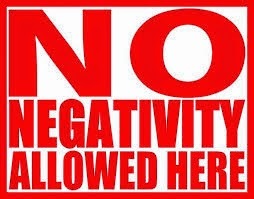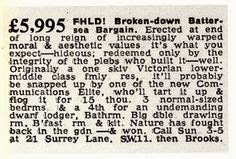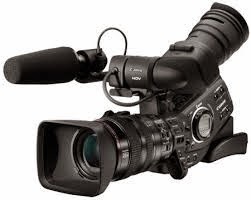Alex Pearl's Blog, page 4
March 20, 2015
The lost art of negative advertising
 These days, all forms of communication seem not only to be governed by the rules of political correctness, but also by a total aversion to any form of negative sentiment.
These days, all forms of communication seem not only to be governed by the rules of political correctness, but also by a total aversion to any form of negative sentiment.Only a few days ago, a junior account handler came back from a client meeting with a request to remove the word 'but' from some copy I'd written, on the grounds that this was too negative a word. If one were to follow this strange form of logic through to its conclusion, I suspect you'd have to lose an awful lot of words from the English dictionary.
As a copywriter, I am staggered and pretty irritated by this fear of the negative. After all, some of the finest and most memorable ads ever written have conveyed negative messages. Can no-one remember those wonderful ads for Albany Life that graced our newspapers back in the day? Headlines like: 'Are you making plans for your wife's death?' And: 'Answer these ten questions
 and work out the date of your own death.'
and work out the date of your own death.'Then, of course, let's not forget the famous pregnant man created by Saatchi & Saatchi that carried the less than positive headline: 'Would you be more careful if it was you that got pregnant?'
Negativity can, of course, also be charming and witty. Parker pens ran a lovely ad penned by Tony Brignull that encouraged the reader to: 'Rediscover the lost art of the insult.' The long copy cited examples of very witty insults and put-downs, and encouraged the reader to let rip with a Parker fountain pen. Besides being a joy to read, it sold a lot of pens.
But perhaps the most negative yet remarkably successful and cost-effective adverts ever penned in the history of advertising were written back in the 60s, not by a copywriter, but by the client himself.
Roy Brooks was an estate agent in the fashionable Kings Road, Chelsea. He was, by all accounts, a sardonic individual with a sharp tongue and a very distinct way with words. And he clearly loathed the kind of disingenuous classified ads that plastered the property pages. So to put matters straight and to stand out from the crowd, he penned his own classified ads. To give you a flavour of the kind of thing he'd bash out on his typewriter, here's one he wrote for a property in Pimlico:
Wanted: someone with taste, means and a stomach strong enough to buy this erstwhile house of ill-repute in Pimlico. It is untouched by the 20th century as far as conveniences for even the basic human decencies are concerned. Although it reeks of damp or worse, the plaster is coming off the walls and daylight peeps through a hole in the roof, it is still habitable judging by the bed of rags, fag ends and empty bottles in one corner. Plenty of scope for the socially aspiring to express their decorative taste and get their abode in The Glossy, and nothing to stop them putting Westminster on their notepaper. Comprises 10 rather unpleasant rooms with slimy back yard, 4,650 Freehold. Tarted up, these houses make 15,000.
Besides being brutally frank, and not unamusing, the ad feels honest and undoubtedly appeals to that universal, deep-seated human instinct we all share of wanting to track down that elusive bargain.
The ad below is another wonderful example. I particularly like: '3 normal-sized bedrooms & a 4th for an undemanding dwarf lodger.' And: 'Nature has fought back in the garden - & won.'
 So incredibly effective were Roy Brooks' classified ads that in time, even people like my father, who had no interest whatsoever in buying property, would turn to the property section of the Sunday Times just to read Roy's latest offering.
So incredibly effective were Roy Brooks' classified ads that in time, even people like my father, who had no interest whatsoever in buying property, would turn to the property section of the Sunday Times just to read Roy's latest offering.Roy Brooks himself became a multi-millionaire on the back of his successful classified ad campaign, and though he died over 30 years ago, his company still runs to this day. But alas, the property ads that appear on the comany's website are the run-of-the-mill variety, laden with the customary superlatives, and not a single negative adjective in sight. Enough to make poor Roy Brooks turn in his grave no doubt.
Alex Pearl is author of Sleeping with the Blackbirds
Published on March 20, 2015 08:36
October 14, 2014
The homeless commercial that's yet to find a home
 Just over a year ago my old friend John Mac (who featured in my last piece) called me at home in a state of excitement. "Alex, can we meet up? I'd like to run an idea past you." John is a professional advertising photographer and is without doubt one of the most energetic and impulsive people I've ever known. He's also incredibly talented both artistically and technically when it comes to producing beautifully lit shots for some of the world's most iconic brands.
Just over a year ago my old friend John Mac (who featured in my last piece) called me at home in a state of excitement. "Alex, can we meet up? I'd like to run an idea past you." John is a professional advertising photographer and is without doubt one of the most energetic and impulsive people I've ever known. He's also incredibly talented both artistically and technically when it comes to producing beautifully lit shots for some of the world's most iconic brands.We met in one of Soho's many watering holes and here he explained that he wanted to shoot a commercial to raise awareness of the homeless in the UK, and donate the finished film to any homeless charity in the UK that wanted to use it. He had recently been given a professional video camera to look after and was keen to put it through its paces.
"I have this idea in my head of a beautifully lit black and white film noir piece shot in the style of an early Roman Polanski. We see an attractive girl running away, and we can hear her terrified thoughts. But we can't understand a word she's saying because she's foreign. And that's the point. We all think we know what homeless people look like. But we don't have the faintest idea." He looked me in the eye. "I think there's something in it. What do you reckon?"
I liked the intriguing nature of the idea, but knew that it would rely entirely on the power of a superimposed copyline that could encapsulate the idea and make sense of this otherwise incomprehensible piece of drama, and I said as much.
"Couldn't agree more, mate. That's the reason I wanted to get you involved." John finished his pint. "Don't suppose you could write us a line could you, and some dialogue? I'd like to do a casting next week. All being well."
It's not the conventional way one would normally approach such a project. Usually there'd be an official briefing with an account director and planner; there'd be a written brief; an agreed marketing strategy and a creative proposition to reflect the strategy. But John had come up with his own strategy and creative proposition in one fell swoop. And it went something like this: tell people that homelessness can affect anyone, and challenge pre-conceived ideas about the kinds of people who become homeless through no fault of their own.
As far as I was concerned, it was a reasonable proposition. And in John's hands I knew that it would be a compelling piece of film. So I slept on it and penned a line in the morning.
 Sarah-Laure Estragnat
Sarah-Laure EstragnatCasting took place the following week at the Soho Hotel, and John was keen for me to attend. He had been through a list of drama school students who were fluent in at least one other language and had selected a handful for the part. Following that one casting there was only one he felt could do the piece justice. But even then he wasn't 100% convinced. And then, as is so often the case when working with John, he had a piece of good luck. One of his make-up artists from Paris called him to say that her best friend, the young French actress,
John spent the next few days doing a recce. Locations would revolve around Woolwich tunnel, Borough market and Waterloo. Sarah-Laure would return to London in two weeks and shooting would take place over two evenings from around 8.00pm to 2.00am. All he needed was a small crew to help with lighting and a make-up artist. (As it turned out this wasn't to be Sarah-Laure's Parisian friend but John's long-standing make-up lady, Anne-Marie Simak.)
I attended the second night of shooting around Borough market. It was fascinating to see John at work on a film, frenetically waving directions to his actor and lighting men. The locations he had selected were particularly atmospheric, especially in black and white. And shooting each scene from different angles was fairly intense. Sarah-Laure was incredibly professional, following every instruction to the letter. Some scenes would be shot umpteen times, and it was distinctly chilly. This was November after all.
At one point, a young couple canoodling in an archway had inadvertently found themselves in one of John's immaculately framed scenes, and he wasn't too happy about it, so he prized himself away from his camera and stormed over to the offending couple. "I'm sorry, but can I ask you to do that somewhere else? We're filming." The couple looked a little startled, giggled and shuffled off in search of another dark corner away from prying eyes. John came back to his camera beaming and chuckling to himself. "Nice night for it." And that was about the only short break in the proceedings.
I took my leave of them at around midnight. It was exhausting just watching all this nervous energy.
A couple of days later John sent me his rough cut. To my eyes it looked perfect, with each short set-up flowing seamlessly into the next. And, of course, the lighting had John's inimitable fingerprints all over it. Final editing, grading and dubbing were completed by Vee Pinot, Matthew Lee-Redman and Zak Kurtha over at Hogarth Post-Production.
The upshot is that this commercial received a great deal of praise from a number of senior figures from various national charities. One in particular (which will remain nameless) loved it, but was unable to screen it for certain "political reasons" which it wasn't prepared to divulge. And as we speak, no other homeless charity has wanted to make use of this free commercial, which John had kindly produced as a favour.
In a recession, it's rather bizarre that charities are happy to employ designers and advertising agencies for which they have significant budgets; and yet turn away free advertising when it comes their way. A case of charities turning their noses up at charity perhaps?
You can see the commercial below:
Alex Pearl is author of Sleeping with the Blackbirds
Published on October 14, 2014 13:30



